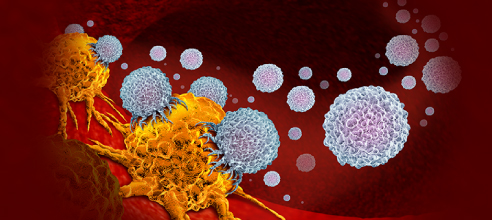Daily Habits to Complement Bunion Corrector Use
Understanding Bunions And Tailor Bunions
What Is A Bunion?
A bunion, also known as hallux valgus, is a bony bump that forms at the base of the big toe, where the first metatarsophalangeal (MTP) joint sticks out. This happens when the bones in the foot shift position, pushing the big toe inward toward the second toe and the joint outward. It’s not just some minor foot quirk — bunions affect about one-third of Americans and can lead to real pain and limited mobility.
When the joint sticks out, it often gets swollen, red, and sore. Over time, this can cause stiffness and difficulty walking. People also notice corns or calluses where the toes rub against their shoes.
What Is A Tailor Bunion?
Think of a tailor’s bunion, or bunionette, as the bunion’s less famous cousin — it’s a similar bony bump but shows up on the outside of the foot at the base of the little toe, where the fifth metatarsal bone protrudes. Instead of the big toe leaning in, the little toe bends inward, pushing against its neighbors and creating pain, redness, and swelling.
This condition isn’t as widely talked about, but it’s a common forefoot deformity. Like the classic bunion, tailor’s bunions can mess with your shoe fit and cause discomfort, especially when footwear presses on that outer foot edge.
Primary Causes And Symptoms
Let’s cut to the chase: Both bunions and tailor bunions show up mainly because of foot mechanics and genetics. If your foot structure runs in your family, you’re already holding cards stacked against you. Add loose ligaments, abnormal gait, or bone misalignment, and the odds get worse. Tight, narrow, or high-heeled shoes don’t start the fire but sure as heck fuel it.
Arthritis and bone spurs can also play their part, adding inflammation and pain to the mix. For bunions, you’ll spot a bulging bump at the big toe base, accompanied by swelling and soreness. Tailor’s bunions show up as a bump near the pinky toe, with similar redness and pain, especially when shoes push against the area.
Both can cause the toes to crowd or cross over, leading to stiffness and reduced foot function. The pain might come and go or stick around depending on how advanced things are.
| Bunion | Tailor Bunion | |
|---|---|---|
| Location | Base of the big toe (first MTP joint) | Base of the little toe (fifth MTP joint) |
| Cause | Bone misalignment, genetics, footwear | Bone protrusion of the fifth metatarsal, genetics, footwear |
| Symptoms | Bulging bump, redness, pain, stiffness | Bump on outside, redness, pain, toe crowding |
| Common Issues | Difficulty walking, corns, calluses | Little toe deformity, shoe pressure pain |
Non-Surgical Approaches To Treating Bunions And Tailor Bunions
You’re not always stuck in a corner with bunions. Let’s play smart and manage the pain and progression without scalpel in sight. Non-surgical care can help you stay comfortable and keep the foot game strong.
- Shoe Modifications: Switch to well-fitting, wide-toe box shoes to reduce pressure on the toes. Avoid tight, narrow, or high heels that crowd those inflamed joints.
- Bunion Splints: Wear splints or braces at night to keep the big toe in a better position. While they won’t fix the bone, they can ease discomfort and slow down deformity.
- Padding and Sleeves: Use bunion pads or soft sleeves around the bump to cushion irritation. This reduces rubbing and helps with inflammation during daily activities.
- Foot Exercises: Target stretches and strengthening moves like toe curls and big toe stretches to improve foot mechanics and flexibility.
- Routine Care: Keep the feet clean, dry, and moisturized. Ice inflamed areas to ease swelling and consider anti-inflammatory meds if pain flares up.
- Choose supportive shoes with enough room.
- Consistently use night splints or braces.
- Practice gentle foot exercises daily.
For those serious about taking control, products like a trusted bunion corrector can be a solid part of your at-home toolkit. They offer a blend of support and relief without the hours-long wait in a doctor’s office or the risk of surgery.
Analyzing Effectiveness: Clinical Evidence and User Experience
Let’s cut to the chase: if you’re dealing with bunion pain, you want to know what really works. Bunion care devices like splints, pads, and sleeves promise relief, but how do they stack up in real life? Clinical trials and user feedback give us a clear picture—these tools ease discomfort but don’t flip the structural script overnight.
Studies show a solid pain drop when using bunion splints or pads, with patients reporting a decrease of 20 to 45 percent on pain scales like the Visual Analog Scale (VAS). That’s like going from a crushing 7/10 pain rating to something closer to a manageable 4 or 5.
Compliance is key in this game. Folks who stay consistent with these devices use them roughly 65 to 80 percent of their treatment days. Miss a few plays, and the pain relief doesn’t hold up. That’s where the real challenge lives—in sticking with the routine long enough to reap benefits.
- Pain Reduction: 20-45% decrease in pain VAS scores reported across multiple trials
- Compliance Rates: 65-80% adherence for daily or nightly use
- Ease of Use: Most devices score high in comfort but vary in durability
Now here’s what the players in the trenches say. On Amazon, user reviews frequently mention comfort and pain relief as top perks. “Finally, something that doesn’t make it worse,” one user wrote, highlighting how the splint eased their daily walk without cutting circulation or causing new aches.
But don’t get me wrong, not everyone hits the jackpot. Some complain about slippage inside shoes, durability issues, or just the fact that these devices don’t correct the deformity, only manage symptoms. That’s a fair call.
Reddit threads echo this mix of praise and skepticism. The grassroots vibe there is all about affordable home remedies that help take the heat off, but users caution they’re band-aids—not cure-alls. Consistency and realistic expectations are the name of the game.
| Metric | Before Treatment | After Treatment |
|---|---|---|
| Pain VAS Score (0-10) | 7 | 4 |
| Compliance (Percentage of Days Used) | — | 72% |
Picture this: you’re playing a long poker hand. Using a bunion splint is like folding when the odds aren’t in your favor. You’re cutting your losses in pain but still have to wait out the hand to see if future rounds (like surgery or lifestyle changes) get you a better payout.
Key Factors in Choosing the Right Simple Care Method for Bunions
Comfort is King
If it’s not comfortable, don’t bother. Wearing a bulky splint that pinches your foot is like trying to run a marathon with two left shoes. Look for devices with soft, breathable materials and adjustable fits that won’t crank the pressure up in the wrong spots.
Ease of Use Matters
Remember, you’re not looking for a Vegas-level puzzle here. The simpler it is to put on and take off, the better. If your bunion device slows you down or feels like a pain in the ass to deal with, user compliance will tank fast.
Cost vs. Lifespan
Price matters, but don’t be stingy with your bunion relief. Cheaper isn’t always better if the product falls apart before you get any relief. Think of it like betting: sometimes laying down a little extra bankroll upfront means more wins in the long run.
Regulatory Approval
Keep an eye on official backstops like FDA Class I clearance. It’s not just bureaucracy; it’s your guarantee that the product meets minimum safety and quality standards. Don’t get sucker-punched by cheap knock-offs without any medical backup.
- Comfortable, adjustable fit
- Easy to use daily
- Good value for the price
- FDA-approved or similar certification
- Products with positive user reviews
Practical Steps to Incorporate Bunion Care in Daily Routine
If you’re serious about managing bunion pain, it’s all about making steady, smart moves every day. Start by switching to shoes with a wide toe box—tight shoes are like house rules that favor the house, not you.
Next, integrate simple foot exercises targeting toe mobility and strengthening muscles around the joint. You don’t need a pro poker coach for this; just dedicate 5-10 minutes daily.
Slip on your bunion sleeve or splint during low-activity times or at night to maximize relief without getting in the way during work or workouts. Track your pain levels; if something feels worse, adjust or switch your approach promptly.
- Wear supportive, roomy shoes
- Perform daily toe and foot exercises
- Use pads or splints consistently
- Monitor and log pain levels
- Avoid high heels or narrow footwear
Comparing Bunion and Tailor Bunion Care: What Changes?
| Bunion (Hallux Valgus) | Tailor’s Bunion (Bunionette) |
|---|---|
| Focus on big toe joint alignment and padding to reduce pressure on first MTP. | Focus on outer foot padding and splints to ease fifth metatarsal prominence. |
| Exercises include big toe stretches and muscle strengthening. | Exercises target little toe positioning and widen foot base. |
| Device fit typically thicker on inside edge of foot. | Device fit thicker on outside edge to counter bump. |
The major difference here is simple—where the problem shows up. With bunions, you’re fighting that big toe’s inward march, so treatments zero in on straightening and cushioning the inside ball of your foot.
Tailor bunions stake their claim on the outside of the foot. That means pads, splints, and exercises shift toward protecting the pinky side, preventing crowding and pressure from shoes.
In both cases, picking the right device means matching it to your specific bump location and comfort preferences. No one-size-fits-all hand here; it’s a tailored play, pun intended.
When to Consider Medical Intervention Beyond Simple Care
Alright, let’s cut to the chase: sometimes bunions play hardball, and your trusty splint or bunion pad just won’t cut it. You know the drill—pain that sticks around like a bad beat at the poker table, or that bump growing like it’s trying to make a comeback. When simple care stops working, it’s time to hear alarm bells.
Signs simple care may not be enough include persistent pain that doesn’t ease up with rest or protective devices. If you notice your bunion or tailor’s bunion getting more crooked or larger, that’s a strong hint you might be losing the hand to nature. Limited movement or stiffness in the toe that messes up your stride is another red flag—you don’t want to walk around feeling like you’re stuck in a bad limbo contest.
Non-surgical care is great for managing symptoms, but it’s no royal flush for stopping the bunion’s progression. Splints, pads, and sleeves help ease discomfort and reduce irritation, but they won’t realign bones or fix structural changes. When pain worsens or deformity gets serious enough to affect walking, surgery sometimes becomes the smart play.
Consulting a Specialist
You wouldn’t walk into a Vegas pit without knowing the rules, and the same goes for foot problems. That’s where podiatrists and orthopedic specialists come in. These pros know the foot game inside out and can tell if your bunion needs more than a band-aid fix.
A podiatrist focuses on foot health and non-surgical options but can also advise when surgery is on the table. Orthopedic surgeons take it a step further—they’re the ones holding the chips when it comes to surgical interventions designed to correct deformities and restore mobility. If your bunion symptoms start knocking like a loud dealer demanding attention, these experts are your best bet.
Don’t wait until you’re limping into the doctor’s office barely able to move. Early specialist consultation can stop a bad hand from getting worse and give you a clearer read on your treatment options.
- Persistent pain: Not relieved by rest or home care.
- Increasing deformity: Visible growth or worsening misalignment.
- Loss of mobility: Stiffness or trouble walking.
- Swelling and redness: Signs of inflammation or possible joint damage.
- Ineffective non-surgical treatment: When splints and pads no longer help.
Safe Use and Compliance: Maximizing Benefits of Home Care Devices
Sock it to bunions the right way with devices designed to keep pressure off that painful spot. The kicker here: wearing splints, pads, and sleeves isn’t a one-and-done move. Like any winning strategy, consistency and care make the difference between relief and regret.
First up, proper fitting is crucial. You wouldn’t slap a poker chip down without checking your cards, right? Same deal—too tight, and you risk cutting off circulation or rubbing skin raw; too loose, and the device won’t do squat. Follow sizing guides closely and test comfort before committing to longer wear.
About how long to wear these devices—the sweet spot usually lies between night use and short daytime sessions. Wearing them non-stop can cause irritation or blistering, so listen to what your feet tell you. Rotate use and take breaks if skin shows signs of redness or soreness.
Maintenance often flies under the radar but it’s as important as playing tight on the river. Keep splints and pads clean and dry. Regular washing (as per product instructions) prevents bacteria buildup and keeps materials working how they should.
Common mistakes? Folks often wear devices too loose, skip breaks, or try to extend wear beyond comfort, ending up with worse symptoms. Don’t be that guy or gal—stick with honest guidelines for best relief.
Safe Use Tips Checklist
- Fit check: Ensure device fits snugly, no pinching or slipping.
- Wear time: Follow recommended durations; start slow.
- Skin care: Monitor for redness or irritation; take breaks as needed.
- Clean regularly: Wash devices per instructions to avoid bacteria.
- Stay consistent: Daily use as directed improves results.
Emerging Trends in Bunion Care Devices and Simple Treatments
Now, here’s a little fun scoop from the foot-care poker table: bunion devices are finally catching up to what users want. Manufacturers are rolling out lighter, breathable materials that don’t make your foot feel like it’s in a straightjacket.
Adjustable fits are another move raising the game—forget “one-size-fits-all” nonsense. These new designs let you dial in support, making your at-home care feel more custom and less clunky.
Some devices now pack integrated support systems that distribute pressure smarter, reducing friction and inflammation long before you hit the doctor’s office. It’s like having your own pit boss watching your back during a high-stakes hand.
Demand for drug-free, easy-to-use options is driving this growth. People want relief that doesn't come with a pharmacy’s worth of side effects or complicated routines.
From what the market updates show, expect more user-friendly innovations hitting shelves soon—making bunion treatment more accessible and less of a gamble.
- Breathable, lighter materials mean comfort and better long-term wear.
- Adjustable fittings allow personalized support without fuss.
- Integrated pressure systems help reduce pain and inflammation.
- Growing market reflects rising demand for simple, drug-free options.
Summary of Key Takeaways for Simple Bunion and Tailor Bunion Care
Here’s the bottom line: managing bunions and tailor’s bunions at home can work—but only to a point. Early action with well-fitted splints, pads, and sleeves eases pain and slows progression.
Know when to call in the pros—if your pain sticks around, deformity worsens, or walking becomes a challenge, it’s time to see a specialist. Podiatrists and orthopedic surgeons are your best call for a smart game plan beyond simple care.
Stick to safe device use, keep ‘em clean, and follow wear guidelines to get the most bang for your buck. The market’s delivering better designs that make everyday relief more comfortable and effective.
Quick Bunion Care Recap
- Use home devices consistently but watch for discomfort.
- Early intervention avoids bigger problems down the line.
- Persistent pain or deformity calls for a foot specialist.
- Proper fitting and maintenance keep devices working right.
- New products offer better comfort and adjustability—try before you buy.
- Like
- Reply
-
Share
About Us · User Accounts and Benefits · Privacy Policy · Management Center · FAQs
© 2025 MolecularCloud



